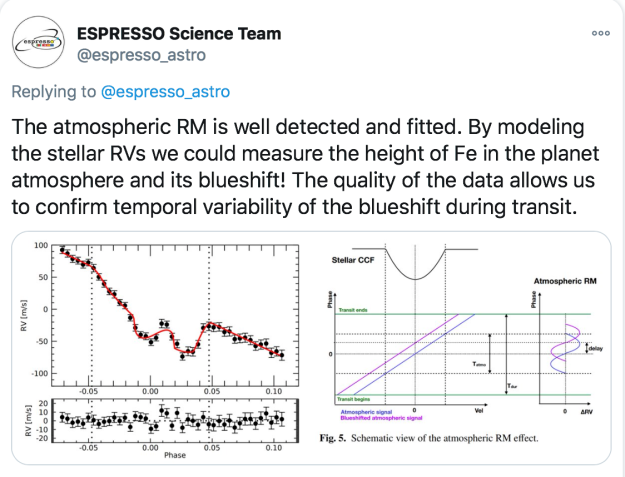Many forefront facilities such as the Hubble Space Telescope and ESO’s Very Large Telescope are being pointed at exoplanets to try to find out what their atmospheres are made of. Yet such work is right at the limit of what can currently be done (though we hope that the James Webb Space Telescope will soon change that). So to what extent can we trust the results?
Here is an interesting puzzle. A new paper by Neale Gibson et al reports a spectrum of the atmosphere of WASP-31b, obtained with the FORS2 instrument on the VLT.

The spectrum is mostly flat, implying that the planet has a fairly cloudy atmosphere, but towards the right-hand side the orange line (a computed model) shows a strong emission line owing to potassium. The problem is that while one data point from previous HST data (small grey circle) indicates the presence of a strong potassium line, the new data from the VLT (the green-square data point) is incompatible with the HST data and would mean that there is no strong potassium line.
Gibson and co-authors put a lot of effort into trying to resolve the discrepancy, and consider whether Earth’s atmosphere might be contaminating the ground-based data, or whether unknown systematic uncertainties might be affecting the Hubble data. Overall they can only “highlight the need for caution” in interpreting such features. This illustrates that science at the cutting edge is never easy, and that much of an astronomer’s time is spent investigating whether one can trust the data one is working with.











